The elephant ear plant, with its captivatingly large, often heart-shaped leaves, has earned its place as a beloved staple in gardens worldwide. Its ability to transform landscapes with its striking tropical aesthetic has captured the imaginations of gardeners, both novice and experienced. This remarkable plant, belonging to the genera Colocasia, Alocasia, and Xanthosoma, offers a diverse range of options, each with unique characteristics that cater to a variety of tastes and gardening styles. Beyond their undeniable beauty, these plants present a fascinating intersection of aesthetics and utility, serving not only as decorative elements but also as sources of sustenance in various cultures. Exploring the diverse types of elephant ear plants unveils a world of intriguing variations, encouraging gardeners to delve into their unique qualities and find the perfect fit for their outdoor spaces. This article serves as a comprehensive guide, venturing into the details of each genus, highlighting their distinctive features, care requirements, and the artistry they bring to the realm of gardening.
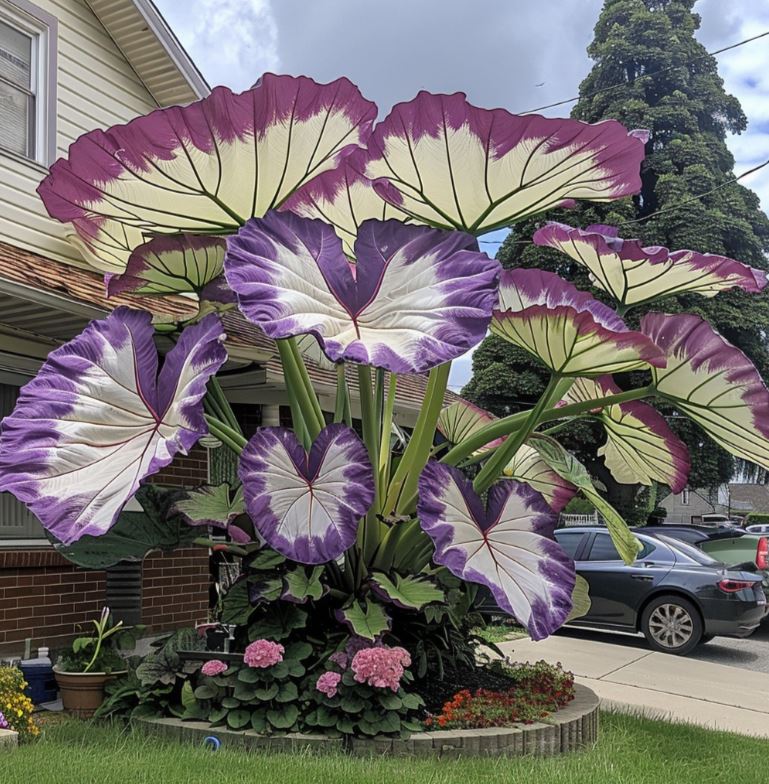
Colocasia: The Robust Beauty of Taro
The Colocasia genus is possibly the most recognized group of elephant ear plants, particularly with Colocasia esculenta, commonly known as taro. This species embodies the quintessential image of the elephant ear, with its large, shield-shaped leaves and robust, often petioled structure. Taro has a deep history, cultivated for thousands of years, particularly in regions of Asia and Polynesia, where it serves as a vital staple food. It’s this intersection of ornamental appeal and culinary value that elevates the Colocasia genus to a prominent position in gardening discussions.
The Culinary Heritage of Taro: A Link to Ancient Cultures
Taro’s journey from a cultivated plant to an integral part of various cultures is a testament to its versatility and inherent value. Its corms, or underground stems, are a source of carbohydrates and nutrients, sustaining communities for centuries. In Polynesian cultures, taro has played an incredibly significant role, shaping rituals, traditions, and even social structures. It’s not just a food source; it’s a cultural cornerstone.
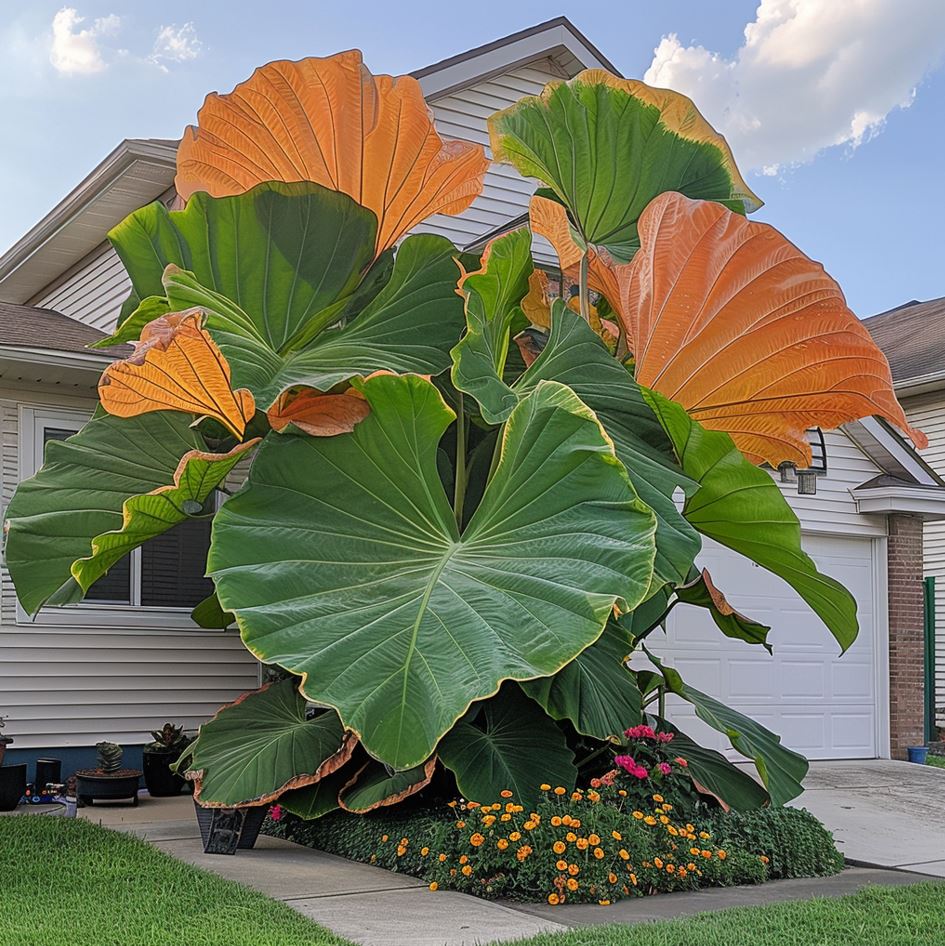
The methods of preparing taro vary widely across cultures, reflecting the diverse culinary traditions that have embraced it. It can be boiled, roasted, or mashed into a paste, forming the basis of dishes ranging from traditional Polynesian poi to Asian-inspired soups and stews. The process of harvesting and preparing taro often involves intricate techniques passed down through generations, showcasing how deeply ingrained this plant is in human history and cultural heritage. The cultivation of taro thus becomes more than just gardening; it’s a connection to a rich tapestry of human endeavor and adaptation to the environment.
The Versatility of Colocasia in Landscape Design
Beyond its cultural significance, Colocasia varieties offer incredible flexibility in garden design. Their impressive size and vibrant green hues make them excellent focal points. Imagine a lush garden corner enlivened by the large, almost sculptural, leaves of the ‘Black Magic’ Colocasia, with its deep, almost black foliage that lends a touch of mystery and drama.
The diverse range of Colocasia cultivars allows gardeners to tailor their landscaping to their individual aesthetic tastes. From the vibrant green of ‘Illustris’ with its distinctive veining to the more muted tones of ‘Diamond Head,’ there are options to create a symphony of color and texture in any garden setting. Their adaptability extends to various growing conditions, from sunny borders to shaded areas under larger trees, making them an incredibly versatile addition to any landscape plan. When strategically placed, Colocasia can add depth, structure, and an element of tropical serenity to otherwise ordinary garden spaces.
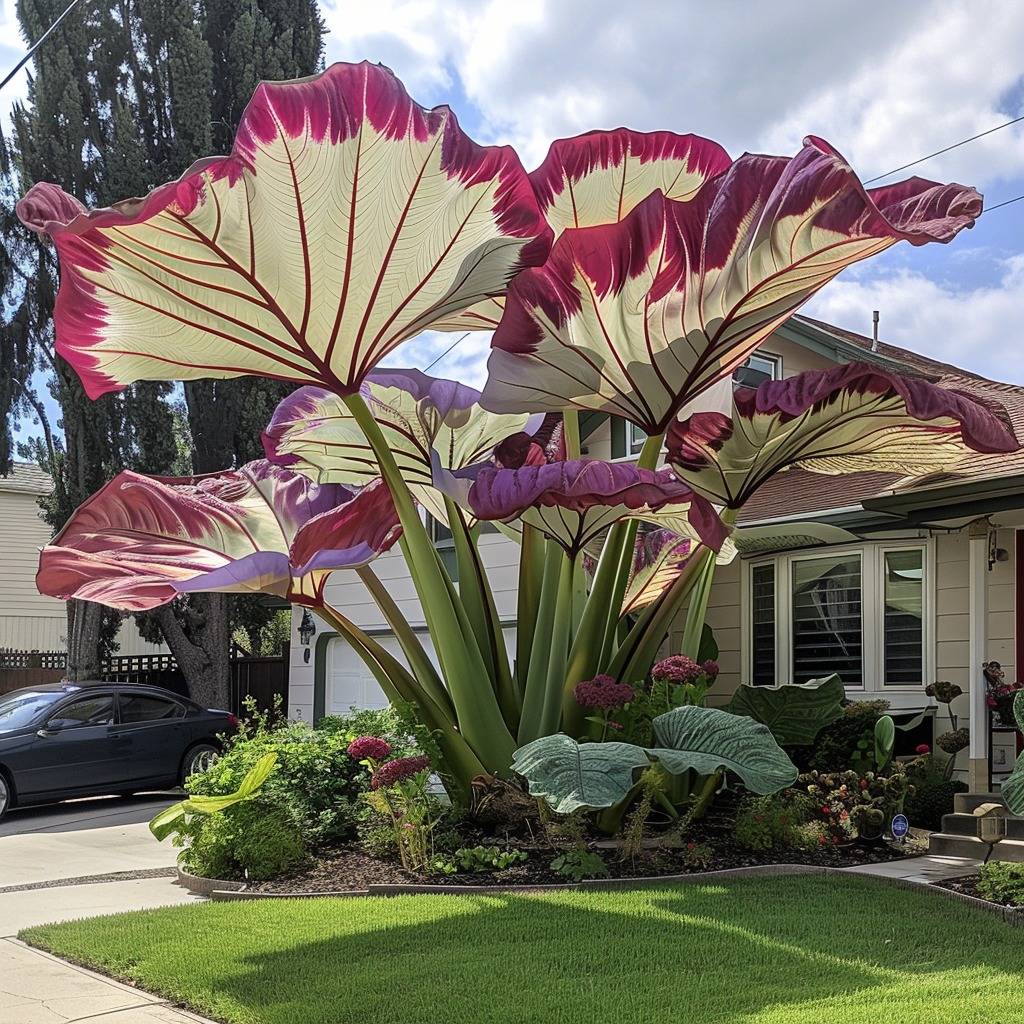
Understanding the Growing Conditions for Taro
Growing Colocasia successfully hinges on understanding its basic needs. A crucial element is warm temperatures. Native to tropical regions, taro thrives in environments where temperatures rarely dip below 60°F (15°C). Exposure to frost can be devastating, making it essential to consider the climate when planting them out in cooler regions.
The importance of moisture cannot be overstated. Colocasia plants relish ample water, especially during their active growing season. Well-draining yet consistently moist soil is ideal for their robust growth. The soil itself should be rich in organic matter, providing the necessary nutrients for healthy leaf development and corm formation. Maintaining a good balance between moisture and drainage is key. Too much water can lead to root rot, while insufficient moisture can impact growth and overall health. The act of caring for these plants provides a humbling perspective on the interconnectedness of life. We, as gardeners, become active participants in the intricate dance of nature, providing the conditions for these plants to thrive and fulfilling our role as stewards of the environment.
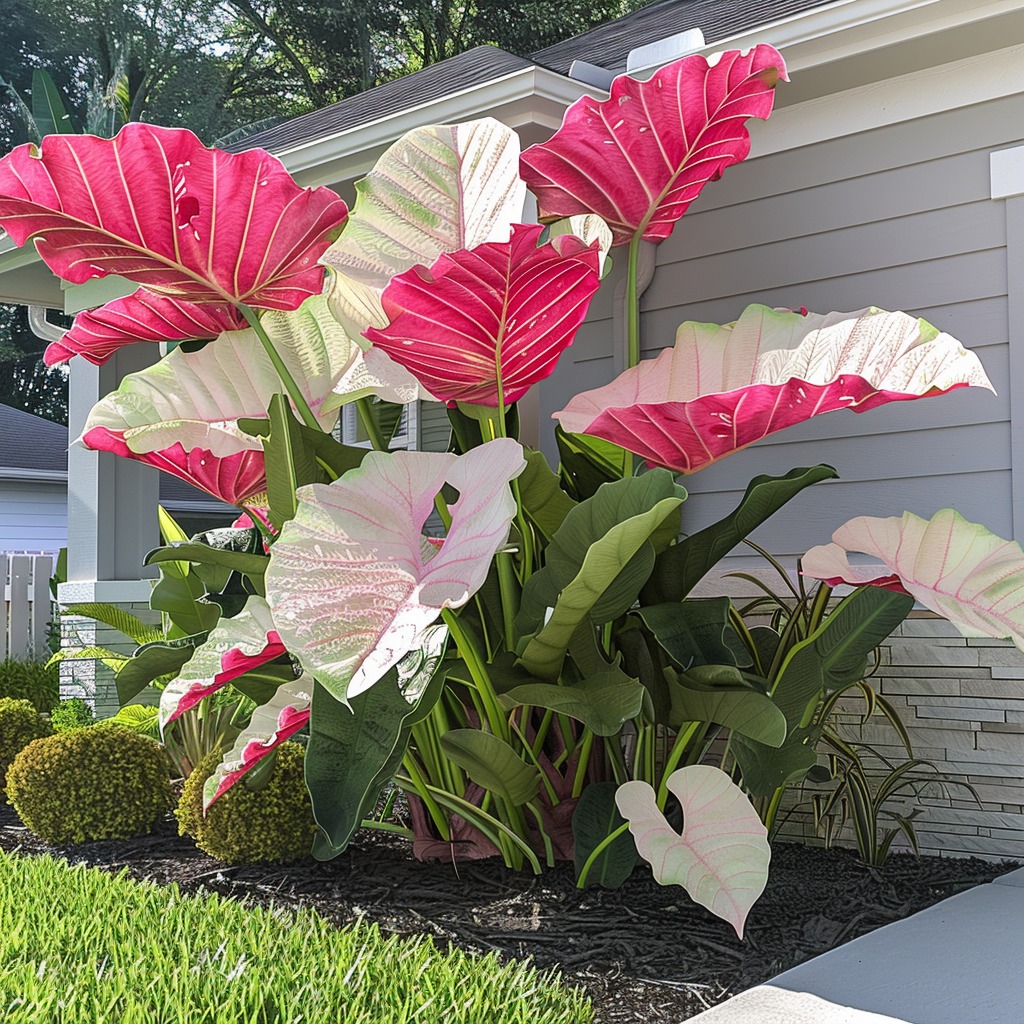
Alocasia: The Ornamental Marvels of the Elephant Ear Family
Unlike Colocasia, whose beauty lies in its robust structure and lush foliage, the Alocasia genus thrives on a more refined artistry, characterized by intricate leaf patterns and striking veins. These elephant ear plant types often exhibit more upright growth habits with leaves that can appear almost sculpted, adding a touch of elegance to any garden space. The genus holds a special charm for those who appreciate the delicate dance of light and shadow across textured surfaces.
The Captivating Patterns of Alocasia Leaves
The defining characteristic of Alocasia lies within the unique beauty of their leaves. Intricate veins, often highlighted with contrasting colors, create a visual symphony that draws the eye. The ‘Polly’ Alocasia, for example, showcases rich, dark green leaves with crisp white veins that seem to radiate outwards from the central stem, giving the impression of nature’s own artistic brushstrokes.
The variations in leaf shape and pattern across different Alocasia species are truly remarkable. Some, like ‘Amazonica,’ display pointed, almost arrowhead-shaped leaves, while others, like ‘Frydek,’ exhibit deep, velvety textures and striking silver markings. The play of light and shadow on these meticulously patterned leaves offers a dynamic visual experience, constantly shifting with the movement of the sun. These plants aren’t simply providing a splash of green; they’re invitations to observe the intricate details of nature, reminding us of the quiet beauty that surrounds us.
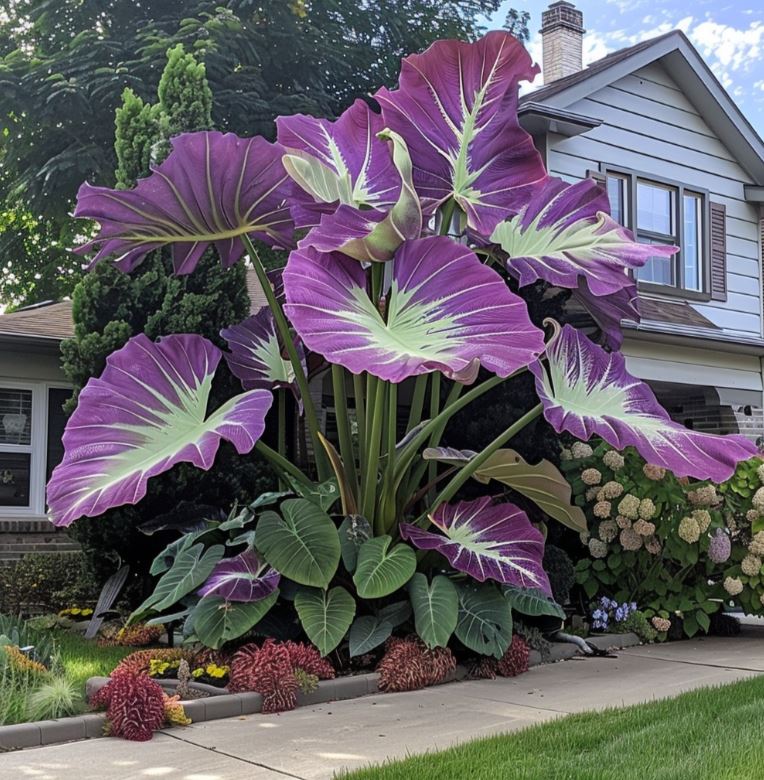
Alocasia in the Context of Garden Design
Alocasia varieties, with their striking visual appeal, provide a spectrum of possibilities for gardeners. Their more upright growth habit makes them ideal for adding vertical elements to a garden, providing a unique texture contrast to spreading plants or low-lying groundcovers. They can be used as dramatic focal points, placed strategically to draw the eye to a specific area within the garden.
Imagine a tranquil patio, surrounded by the delicate architectural beauty of Alocasia leaves. Their ability to bring the feel of a rainforest to a garden adds a touch of exotic allure to any space. They can also be used to create a sense of depth and mystery in garden beds or borders. Alocasia cultivars, combined with carefully chosen companion plants, can transform a garden into a vibrant and visually stimulating experience, blending the artistic elements of color, texture, and shape into a cohesive whole.
Nurturing Alocasia: Requirements for Optimal Growth
Alocasia, like their Colocasia cousins, needs warm temperatures and consistent moisture for optimal growth. They’re sensitive to cold drafts and frost, requiring protection during colder seasons. In cooler climates, they are frequently grown as houseplants, where they can thrive in bright, indirect sunlight.
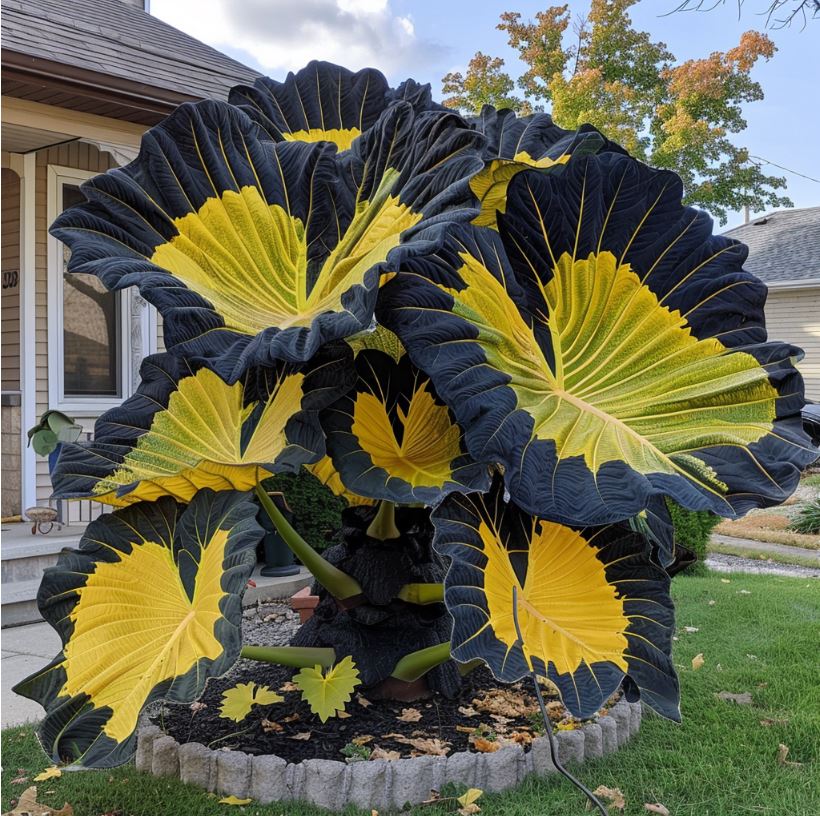
The soil type is crucial for healthy Alocasia growth. They prefer a well-draining potting mix enriched with organic matter. Overwatering can lead to root rot, so ensuring good drainage is essential. Watering should be done when the top inch of the soil feels dry, providing a gentle balance of moisture. Regular fertilization during the growing season with a balanced liquid fertilizer provides the necessary nutrients for healthy growth and leaf development. The cultivation of Alocasia highlights the intricate balance needed to foster a thriving ecosystem, reminding us that respecting the needs of each plant is key to its beauty and resilience.
Xanthosoma: The Versatile and Edible Elephant Ear
The Xanthosoma genus, often referred to as tannia or malanga, shares both the distinctive large foliage and the edible corms with Colocasia. However, Xanthosoma varieties often display a more pronounced heart shape in their leaves, hinting at their connection to the broader elephant ear family. These plants showcase the fascinating duality of being both ornamental and functional, making them incredibly valuable assets in a gardener’s toolkit.
The Culinary Uses of Tannia: A Nourishing Harvest
Xanthosoma, like Colocasia, has a deep connection to human cuisines across different cultures. The starchy tubers it produces are edible, representing a reliable source of carbohydrates in regions where it’s commonly cultivated. They are often boiled, roasted, or added to various dishes, serving as a nutritious addition in traditional diets, similar to taro.
The preparation of Xanthosoma tubers can vary depending on the intended use and cultural preferences. In some communities, the tubers are peeled and boiled, enjoyed as a side dish or a main component in stews and soups. The flavour profile of Xanthosoma can be described as subtly nutty and earthy, complementing the hearty nature of traditional dishes. The cultivation of this plant serves as a reminder of the interconnectedness of our food systems and the importance of cherishing crops that nourish and sustain us.
Xanthosoma in the World of Ornamental Gardening
Beyond its culinary value, Xanthosoma is an attractive addition to any garden focused on a lush, tropical aesthetic. The leaves, with their vibrant shades of green and distinct heart shapes, can be a focal point in a garden bed or a border. Many cultivars also exhibit variations in leaf patterns and colors, adding a unique aspect to their ornamental appeal.
Xanthosoma varieties can be used as bold statements in landscape design, adding a playful, almost sculptural element to the landscape. Whether placed along a walkway for a touch of tropical charm or nestled amidst other vibrant foliage, they bring a distinctive presence to any garden setting. Their ability to thrive in a variety of conditions, from full sun to partial shade, makes them surprisingly versatile within a garden plan. It’s a testament to resilience and adaptability, embodying the spirit of nature’s own artistry.
Cultivating Xanthosoma: Tailoring Care for Optimal Growth
Xanthosoma, though resilient, is best cultivated in warm and humid environments, similar to Colocasia and Alocasia. They thrive under temperatures above 60°F (15°C) and prefer consistently moist, well-draining soil. These plants require abundant light, particularly during the growing season, but can tolerate light shade as well.
Just like other elephant ear types, Xanthosoma needs consistent watering, especially during periods of active growth. The goal is to maintain a consistently moist environment near the roots without overwatering. Fertilization with a balanced liquid fertilizer is recommended during the growing season, providing the essential nutrients for healthy growth and tuber development. Providing these plants with the right care is an act of nurturing, building a relationship with the natural world, and creating a thriving haven in your garden.
Conclusion
The world of elephant ear plant types, encompassing the Colocasia, Alocasia, and Xanthosoma genera, presents a remarkable tapestry of beauty, diversity, and cultural heritage. Each genus offers a unique expression of the elephant ear plant, from the robust and utilitarian taro to the delicately patterned Alocasia and the versatile Xanthosoma. Whether you are drawn to their aesthetic appeal, intrigued by their culinary applications, or captivated by the way they enhance the landscape of a garden, these plants offer a profound connection to the natural world.
By understanding their unique characteristics – their adaptations to different environments, their care requirements, and the roles they have played in human cultures – we gain a deeper appreciation for the intricate web of life that surrounds us. The cultivation of elephant ear plants encourages a mindful approach to gardening, reminding us that nurturing these plants is not just about aesthetics but about fostering a healthy ecosystem, respecting the natural world, and discovering the deep connections between human life and the environment. As gardeners, we become participants in this intricate dance, contributing to a vibrant garden space while deepening our understanding of the profound beauty and interconnectedness that exists within nature.




